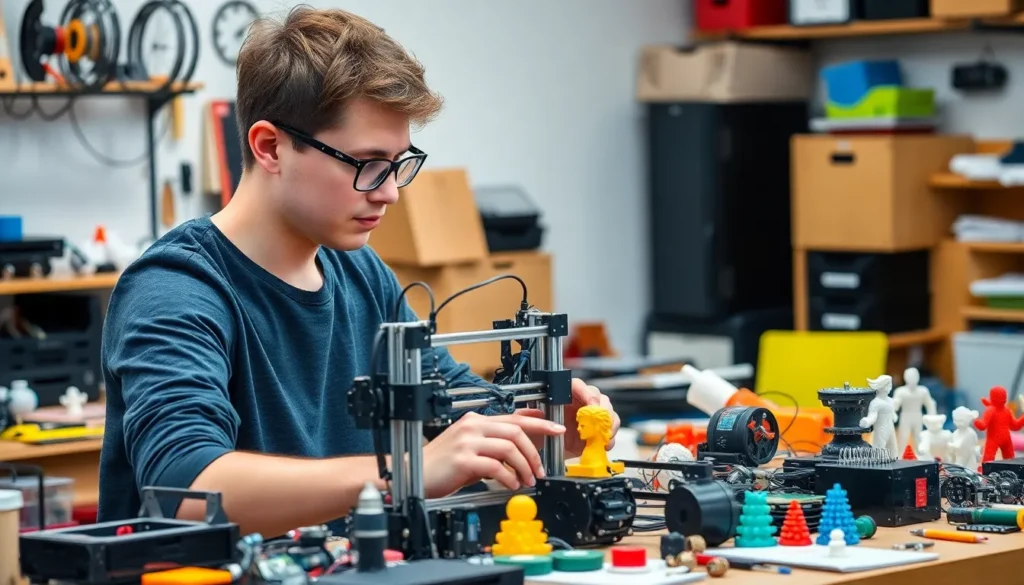Table of Contents
ToggleIn a world where creativity knows no bounds, 3D printer kits are making waves like a cat video on the internet. These kits offer aspiring inventors and hobbyists a chance to transform their wild ideas into tangible reality, all from the comfort of their own home. Imagine printing your own custom action figures or even a life-sized replica of your favorite snack—now that’s what we call multitasking!
Overview of D Printer Kits
3D printer kits provide a practical solution for enthusiasts and professionals seeking to explore the world of 3D printing. These kits often include essential components—like the frame, motors, and wiring—as well as assembly instructions, making them approachable even for beginners. Enthusiasts can customize their experience with various models, offering different build sizes and features tailored to specific projects.
Many kits are designed with user-friendliness in mind, featuring straightforward assembly processes that require minimal tools. This accessibility opens up opportunities for individuals without advanced technical skills. Compatibility with various filaments—like PLA, ABS, and PETG—allows users to experiment and achieve desired results across different projects.
For hobbyists, affordability creates an attractive option compared to fully assembled printers. Prices for 3D printer kits can range from $200 to $600, depending on quality and included features. More advanced kits might offer higher resolution and faster print speeds, catering to users with specific requirements. Reviews, such as those from Tom’s Hardware and 3DPrint.com, provide insights on the top kits available, aiding consumers in making informed decisions.
Reliability remains a crucial factor when selecting a 3D printer kit. Many reputable brands, including Creality and Prusa, have built strong reputations by prioritizing quality and customer support. Warranty options further enhance buyer confidence, ensuring assistance if issues arise during use.
D printer kits pave the way for new creative possibilities, allowing users to explore design and engineering principles at their own pace. As demand for 3D printing continues to grow, these kits serve as effective entry points for individuals ready to dive into the exciting realm of additive manufacturing.
Types of D Printer Kits

Various types of 3D printer kits cater to different printing needs and preferences. Understanding these types helps users select the right kit for their projects.
Fused Deposition Modeling (FDM) Kits
FDM kits represent the most popular choice for beginners and enthusiasts. They utilize thermoplastic filaments that melt and extrude layer by layer, forming a solid object. Most FDM kits come with easy-to-follow assembly instructions, making them accessible. Users often appreciate the cost-effectiveness of materials, which typically range from $20 to $50 per kilogram. Brands like Creality produce reliable FDM kits, ensuring performance and ease of use. Versatile applications include prototyping, toys, and educational projects. Users frequently cite the wide availability of filament colors and types as a significant advantage.
Stereolithography (SLA) Kits
SLA kits offer high-resolution printing, ideal for detailed models. These kits use photosensitive resin cured by UV light, resulting in smooth finishes and intricate designs. Most SLA kits require precise calibration, which enhances printing accuracy. Users can find materials, such as resin, priced from $50 to $150 per liter. Popular brands include Anycubic and Elegoo, known for their robust customer support. Applications often involve jewelry, miniatures, and dental models. Users value the sharp detail that SLA printing provides for professional-grade results.
Key Features to Consider
When choosing a 3D printer kit, several key features significantly impact the overall printing experience and results. Understanding these features helps users make an informed decision.
Build Volume
Build volume refers to the maximum dimensions of an object a printer can produce. Kits with larger build volumes allow for the creation of bigger projects, such as furniture or large prototypes. He should consider his specific needs when assessing volume, as smaller options might limit creativity for larger designs. Most popular kits offer build volumes ranging from 200x200x200 mm to 300x300x400 mm. Kits with ample build space facilitate diverse applications across multiple industries.
Print Quality
Print quality encompasses the clarity and detail captured in finished models. Factors that influence quality include layer height, print speed, and material type. A lower layer height generally produces finer details, while higher speeds can lead to less precision. Users should prioritize kits capable of achieving resolutions from 50 microns to 300 microns. Quality directly impacts the overall satisfaction of the printed product, making it crucial for both hobbyists and professionals. Investing in a kit known for superior print quality ensures successful project outcomes.
Popular D Printer Kits
3D printer kits come in various options, catering to different budgets and needs. The selection includes affordable models for beginners and advanced kits for seasoned makers.
Budget Options
Affordable 3D printer kits typically range from $200 to $300, making them accessible for hobbyists. Popular choices include the Creality Ender 3, known for its reliability and solid performance, and the Monoprice Select Mini, which offers a compact design ideally suited for limited spaces. Both options simplify the assembly process, allowing users to start printing quickly. The availability of a wide range of compatible materials enhances their versatility. Users often appreciate the community support surrounding these budget kits, where many resources can help troubleshoot common issues.
High-End Options
High-end 3D printer kits start around $500 and can exceed $1,000, designed for advanced users seeking professional-quality results. The Prusa i3 MK3S+ stands out with its robust features, including active mesh bed leveling and filament sensors that prevent printing failures. Another standout choice is the Anycubic Photon Mono X, an SLA kit that delivers exceptional detail and precision, making it ideal for intricate models. Both options provide extensive documentation and customer support, ensuring users maximize their investment. High-end kits often include advanced materials as well, catering to industries such as engineering and design.
Tips for Setting Up and Using D Printer Kits
Selecting the right location for the assembly of 3D printer kits is crucial. A clean, spacious area helps prevent loss of small parts during setup. Additionally, reading the assembly instructions thoroughly before starting simplifies the process. Using tools provided in the kit ensures users don’t overlook essential components.
Focusing on your printer’s frame alignment is vital. An uneven frame can lead to print quality issues. Aligning the frame correctly during setup eliminates many potential problems later. After the frame is set, securely installing the motors and wiring aids in smooth operations.
When calibrating the printer, consider following manufacturer guidelines closely. Proper calibration can significantly enhance print quality. Regularly checking the bed leveling after a few prints maintains consistent results. Users should also clean the print bed regularly to ensure optimal adhesion.
It’s important to select high-quality materials for printing. Using the recommended filaments helps achieve better results and prolongs the lifespan of the printer. Following the specific temperature settings for different materials increases print success.
Staying engaged with the 3D printing community provides valuable support. Online forums and local groups are great for discussing issues, sharing tips, and showcasing projects. Utilizing available resources can help users troubleshoot issues effectively.
Experimenting with different print settings allows for customization. Adjusting layer height and print speed can tailor results to specific projects. Users can find optimal settings through trial and error or by consulting experienced peers.
Lastly, documenting the printing process and results serves as a useful reference. Keeping track of successful prints and modifications can facilitate future projects. Organized notes on settings and materials streamline the entire 3D printing experience.
3D printer kits open up a world of creative possibilities for both beginners and seasoned enthusiasts. With options ranging from budget-friendly models to high-end machines, there’s a kit for every need and skill level. Their accessibility and customization options make them ideal for those eager to explore the realm of additive manufacturing.
As individuals dive into their 3D printing journeys, the right kit can make all the difference in achieving satisfying results. By prioritizing quality, reliability, and community support, users can maximize their experience and bring their imaginative projects to life. Embracing the 3D printing community will only enhance their skills and inspire future creations.







